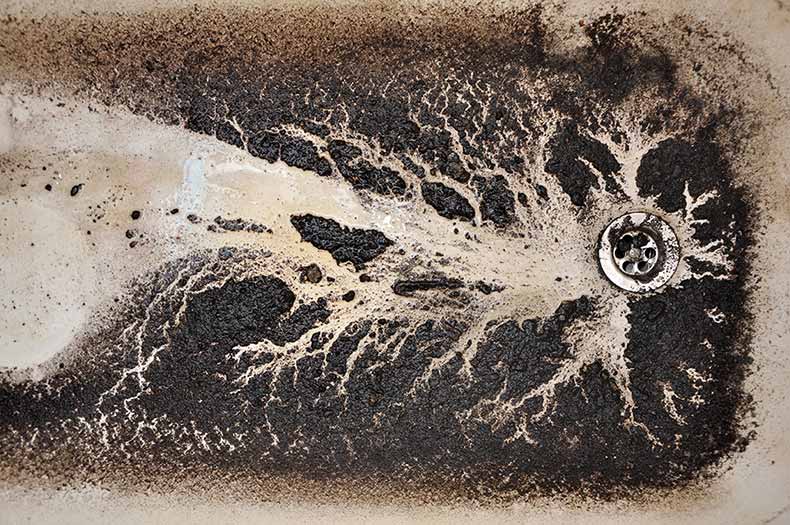Unpacking the Causes of Sewage in the Bathtub
Unpacking the Causes of Sewage in the Bathtub
Blog Article
This great article on the next paragraphs involving What To Do If Sewage Starts Backing Up Into the Shower is indeed fascinating. You should check it out.

Sewer backup in the bathtub can be a stressful and unhygienic trouble for any kind of homeowner. Not only is it inconvenient, but it also postures severe health risks and indicates underlying problems with the plumbing system. Recognizing why sewer is coming up via the bathtub is crucial for taking ideal activity to resolve the trouble efficiently.
Introduction to the Issue
Usual Factors for Sewer Back-up
Clogs in the Drain Line
One of one of the most usual root causes of sewage backup is an obstruction in the sewage system line. This can happen as a result of the buildup of debris, grease, or foreign items in the pipelines, stopping appropriate circulation and causing sewage to support right into your bath tub.
Tree Root Intrusion
Tree origins seeking dampness and nutrients can infiltrate sewer lines via tiny cracks or joints. Gradually, these origins can expand and expand, triggering significant damages to the pipelines and causing sewer backup concerns.
Comprehending the Problem
When sewage starts backing up right into the bath tub, it's a clear indication of a trouble with the drain system. The wastewater that must be moving away from your home is instead finding its back into your space, which can bring about considerable damage and health hazards.
Potential Causes
Numerous elements can contribute to sewer back-up in the tub. From clogs in the sewer line to problems with the plumbing framework, determining the root cause is crucial for discovering an option.
Aging Framework
Older homes may have outdated plumbing systems that are more prone to rust, cracks, and wear and tear. As pipelines age, they come to be more susceptible to leakages and obstructions, enhancing the chance of sewage back-up cases.
Heavy Rainfall or Flooding
During periods of heavy rainfall or flooding, the sewer system may come to be overloaded with excess water, triggering backups and overflows. This can lead to sewer supporting right into tubs and other components inside the home.
Signs of Sewage Backup
Foul Odors
Unpleasant odors originating from drains pipes or fixtures, particularly in the bathroom, may suggest sewer back-up issues. These odors are usually solid and persistent, signifying a problem that requires prompt attention.
Slow Draining Fixtures
Tubs, sinks, and toilets that drain pipes gradually or otherwise in all could be experiencing sewer back-up. If numerous fixtures are affected all at once, it's most likely that the concern stems from an usual factor, such as the main drain line.
Gurgling Noises
Odd gurgling or gurgling sounds coming from drains pipes when water is running somewhere else in the house are a sign of air entraped in the plumbing system. This air buildup can arise from sewage backup and must be examined promptly.
Health And Wellness Threats Associated with Sewer Backup
Contamination of Water Supply
Sewage backup can pollute the water in your home, posturing a serious health and wellness risk to you and your family. Direct exposure to contaminated water can cause intestinal issues, skin infections, and other health problems.
Mold and mildew Growth
Moisture from sewer backup can develop perfect problems for mold growth in your home. Mold spores can intensify respiratory problems and cause allergic reactions in sensitive individuals, making punctual clean-up essential.
Spread of Illness
Sewer contains unsafe germs, viruses, and bloodsuckers that can trigger a series of illness, consisting of liver disease, cholera, and gastroenteritis. Entering contact with sewer or contaminated surface areas puts you in danger of infection.
Cleaning Up After Sewage Back-up
Disinfection Procedures
Extensively sanitize and disinfect affected areas after sewage back-up to eliminate damaging germs and stop mold growth. Use suitable cleaning items and protective gear to guarantee risk-free and efficient cleanup.
Repair of Affected Locations
Fix any type of damage to flooring, wall surfaces, or components triggered by sewer backup. Relying on the degree of the damage, you may need to replace carpets, drywall, or various other materials to recover your home to its pre-loss problem.
Immediate Actions to Take
Shutting Off Supply Of Water
In the event of sewage back-up, it's vital to turn off the supply of water to avoid further contamination and damages. Situate the main water shutoff valve in your house and closed it off till the issue can be settled.
Speaking To a Professional Plumber
Handling sewer back-up is not a DIY task. Call a certified plumber with experience in taking care of sewage-related issues to examine the situation and perform needed repair services or clean-ups.
Staying Clear Of Contact with Infected Water
Until the sewage back-up is settled, avoid contact with contaminated water to avoid the spread of bacteria and pathogens. Put on safety gear if you should remain in the affected area and clean your hands thoroughly later.
Safety nets
Regular Maintenance of Drain Lines
Schedule routine evaluations and upkeep of your sewer lines to identify and address potential problems before they intensify into significant troubles. This can include cleaning particles, evaluating for tree origin breach, and repairing any damaged pipes.
Installing Bayou Valves
Consider mounting backwater shutoffs in your plumbing system to prevent sewage from receding into your home during durations of heavy rainfall or flooding. These shutoffs automatically close when water starts backing up, shielding your building from contamination.
Correct Disposal of Household Waste
Stay clear of flushing anything apart from toilet paper and human waste down the toilet to prevent obstructions and blockages in the sewage system line. Dispose of oil, oil, and other home chemicals effectively to decrease the risk of plumbing troubles.
Why is There Sewage Coming Up Through the Bathtub
Sewage in your bathtub is a major problem that can make you want to abandon the bathroom for good. You don’t have to. However, it is important to identify the source of the issue and take the necessary steps to resolve it in order to avoid any health risks and property damage. In this article, we will discuss what could be causing sewage to back up through your bathtub so you can take action quickly and effectively.
The Main Reason For Sewage Backup in The Bathtub
All the sinks and toilets in your home connect to different pipes that lead to the main sewer line. The sewer line then connects to the municipal sewer system. This connection works seamlessly on a daily basis, but there can sometimes be a problem with the main sewer line.
The most common cause of sewage backup is a clogged or blocked main sewer line. The main sewer line can be clogged due to the accumulation of debris, tree roots or grease buildup, or other materials. Another possible cause is a collapsed pipe. When this happens, your toilets and sinks won’t be able to drain properly. This is when sewage starts backing up through the bathtub. If the problem has been occurring for some time now, it might be time to consult with a plumber as there may be more severe damage that needs fixing.
How Can You Tell if it’s Coming From Your Sewer Line?
If you’re experiencing a sewage backup in your bathtub, then you can use a few simple methods to determine if it is coming from the main sewer line. First, try to unclog the tub drain with a plunger or an auger and see if that helps. If not, then inspect all of the drains in your house and check if there is any blockage in them. If some of the other drains are not working fine, then it’s likely the problem is with your main sewer line.
Common Signs of a Clogged Main Sewer Line
If you suspect that your main sewer line is blocked, then there are a few common signs to look out for. Frequent clogs in your home are a sure sign of a clogged sewer line. You can also check for slow drainage from all the plumbing fixtures.
Slow Drains
If you notice that it takes longer for your sinks and toilets to drain, then this could be a sign of a clogged main sewer line.
Frequent Clogs
Another common sign is that your drains or toilets become clogged almost all of the time. If this happens, then it could be a sign that the main sewer line is blocked.
Water Backup
Do you notice water or sewage coming back up from any of the drains in your home? If your answer is yes, you may have a clogged main sewer line.
Sinkholes
If you’ve noticed sinkholes in your yard or overflowing sewage from the ground, you may be facing a blocked sewer line issue.
Your Shower or Sink Makes Gurgling Noises
Have you noticed gurgling noises coming from your sink or shower lately? These are typically signs of a blocked sewer line and should be checked out immediately.
How to Prevent a Main Sewer Line Clog
Once you’ve identified that your main sewer line is clogged, it’s important to take steps to prevent it from happening again. The best way to do this is to avoid putting any solid material that can clog the drain, such as grease and other debris. You should also be mindful of what you flush down your toilet. In addition, you should schedule regular maintenance for your main sewer line. This will help keep it clear and free from clogs or backups.
What Should You do if You Notice Sewage Backing up Through The Bathtub?
If you’ve noticed sewage backing up through the bathtub, then it is important to call a professional plumber immediately. A plumber can inspect the situation and determine what the cause is, such as a blocked main sewer line. They will also be able to advise you on how best to fix the issue. In some cases, a simple drain cleaning may be all that is needed.
However, if the blockage is severe, then your plumber may need to use more advanced methods to clear the blockage.
No matter what, it is important to always call a professional plumber if you experience any kind of sewage backup. They will be able to assess the situation and provide you with a solution that is best for your home.
https://baylorinc.com/blog/why-is-there-sewage-coming-up-through-the-bathtub/

Do you really like reading about ? Create feedback further down. We'd be glad to know your opinion about this content. We hope that you visit us again in the near future. Sharing is caring. Who knows, you may just be doing someone a favor. Thank you so much for your time invested reading it.
This Site
Report this page